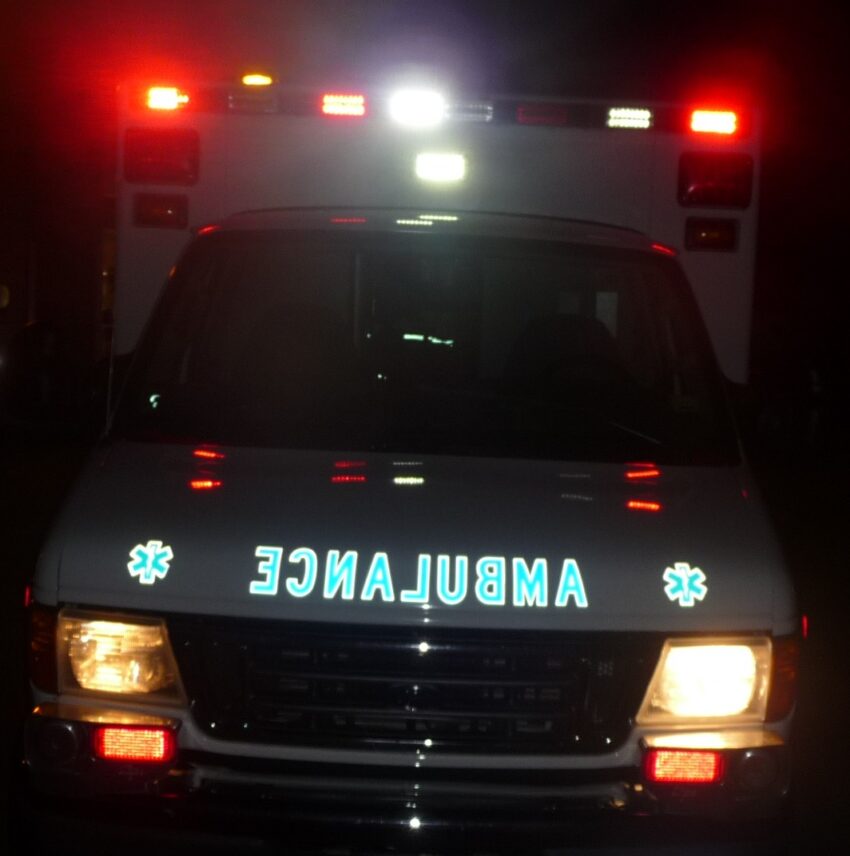Last week my partner and I were called Baby Killers on a call. We haven’t been the only crew to have names shouted at us in the last two weeks. This all stems from a news story about a delayed ambulance response — the implication being if the ambulance had arrived quickly the patient would have lived. The incident is under investigation. It is not the first time we have been called names after negative news stories about late EMS responses. It is an occupational hazard.
Back in March of 2008, I responded to a query from Men’s Health magazine called “Does EMS Need to Call 911?” that asked readers to respond to the question, “Have you ever waited a long time for an ambulance to arrive?” (Later in 2008, Men’s Health published the article Can 911 Be Saved?)
Here’s what I wrote 15 years ago:
People expect an ambulance in their moment of need, and most of the time, in a matter of moments, a paramedic is at the door to help. Sometimes the ambulance doesn’t come as quickly as the patient or their family would like, so they complain about it.
Here is the crux of the problem: People most often use 911 for routine transport to a hospital, not time dependent life-threatening emergencies. Vomiting all night, a psychiatric patient not taking her medicine, a fall with knee pain. With an aging population and doctors who no longer make house calls, and nursing homes unable to care for what they term “unstable” patients, elderly patients with general sickness make up a large percentage of 911 calls. Additionally, many younger patients with non-critical symptoms fail to call their doctor before calling 911 when their doctor will often tell them to come to their offices and not the ED. Many don’t have doctors so they use the ED as their doctor and the ambulance as their taxi.
Calls come in at random. You can sit for hours doing nothing and then ten calls come in at once. While companies try to staff to meet expected peak periods of demand, sometimes “the shit just hits the fan.” Traffic does not yield for ambulances delaying responses, and police do not enforce traffic laws requiring people to yield. People do not mark their houses with numbers that can be seen from the street. Then once you arrive at the right curbside addresses, it often takes even longer to get to the patient’s side due to locked doors, faulty elevators, and in the cases of some companies, policies requiring the ambulances to use service entrances.
Once you arrive at a patient’s side, many patients are not ready to go. They have to get their coats, wait for their neighbor to come over, turn off all the lights, feed the dog, call their relatives, etc. With the growing obesity of today’s population, it is not uncommon for two ambulances to be required to provide manpower to carry a heavy patient from a house. Ambulances are required to transport anyone who requests an ambulance whether or not their call is an emergency. Ambulances are not allowed to leave (abandon) a patient with a minor complaint even if a serious emergency occurs just doors down. Ambulances are required to take the patient to their hospital of choice (provided it is within the ambulances service area as opposed to the closest hospital. This can add twenty minutes to a transport. Sometimes hospitals are on diversion, requiring further time transporting to a hospital that is open.
Few transports to the hospital are done lights and sirens because lights and sirens are inherently unsafe to crew and patient and other traffic. The ambulance patient compartment is not designed to any reasonable safety standard. Ambulance personal are maimed in traffic accidents on a startling basis. Better to take 30 minutes to get to a hospital than get into an accident and not arrive at all. This is not to say that lights and sirens are not used when the patient presents with a condition in which the hospital can do something the paramedic cannot that will make a difference in the patient’s outcome in the time saved by going lights and sirens.
Due to hospital overcrowding, ambulance crews often spend more time with their patient at the hospital waiting to get through the hospital triage line and then get a bed for a patient than they spend responding to a call, treating and transporting a patient. To top it off, many people don’t have insurance to pay for their ambulance bill and even Medicare rarely pays for the true cost of ambulance service. In some critical calls the cost of supplies and medicine alone far exceeds what the ambulance company can bill.
While it is easy for people, politicians and the media to complain about late ambulance responses, no one is calling for higher taxes or realistic proposals to cut other government programs to pay for more ambulances, more hospital beds, better reimbursement rates and fundamental changes in the way health care is provided in this country. Peter Canning, EMT-P
15 years later, the situation has only gotten worse.

